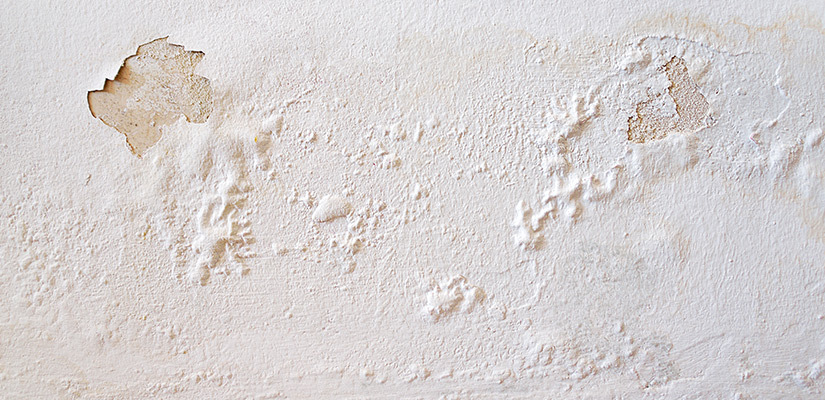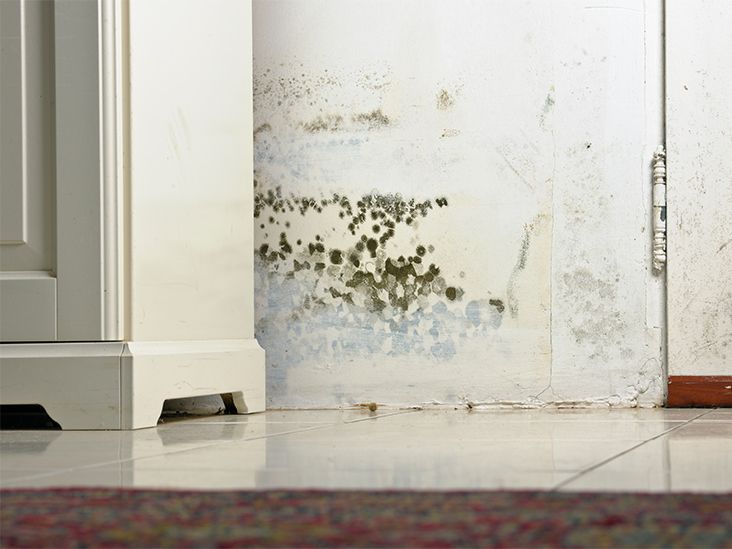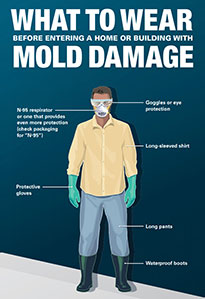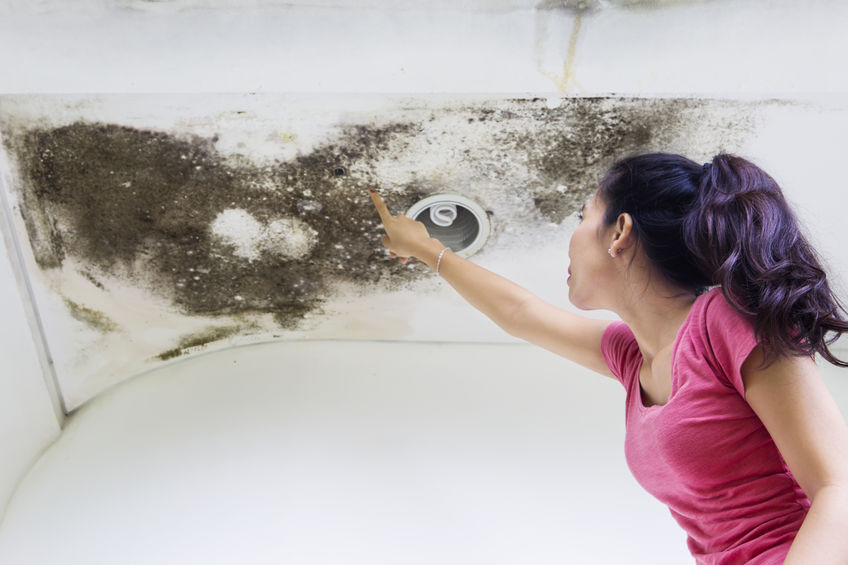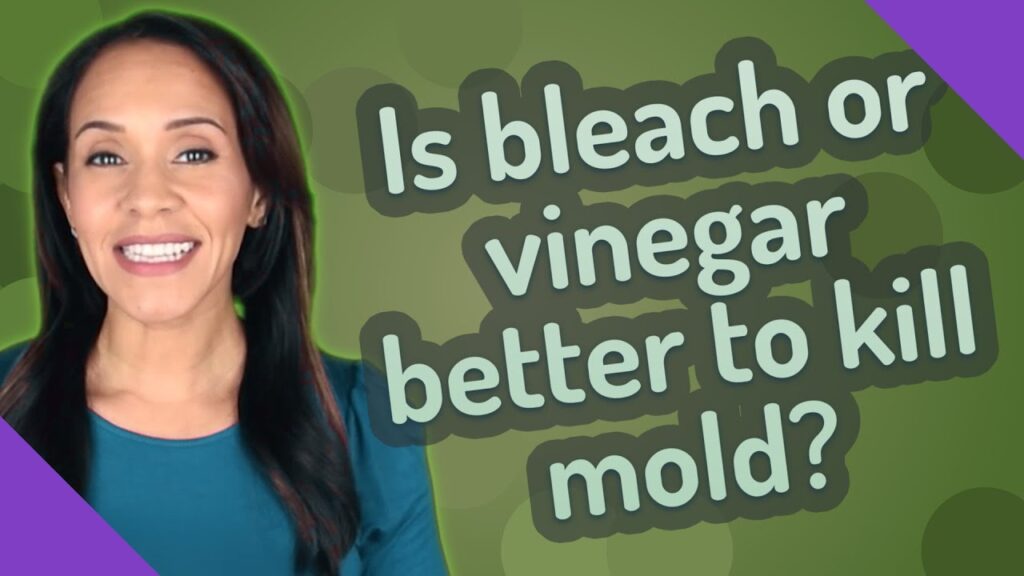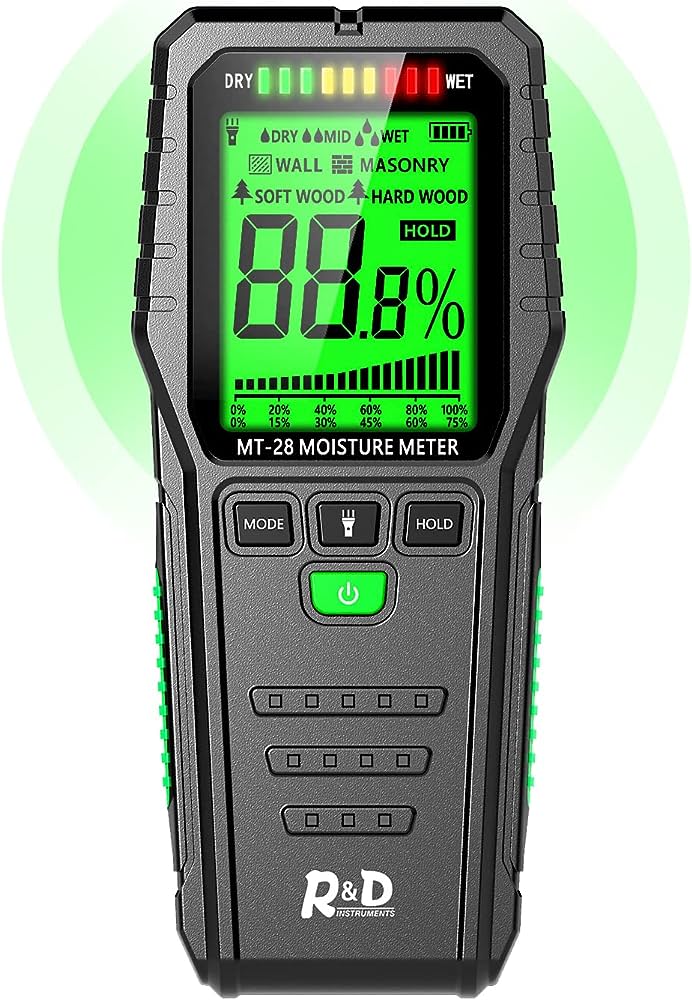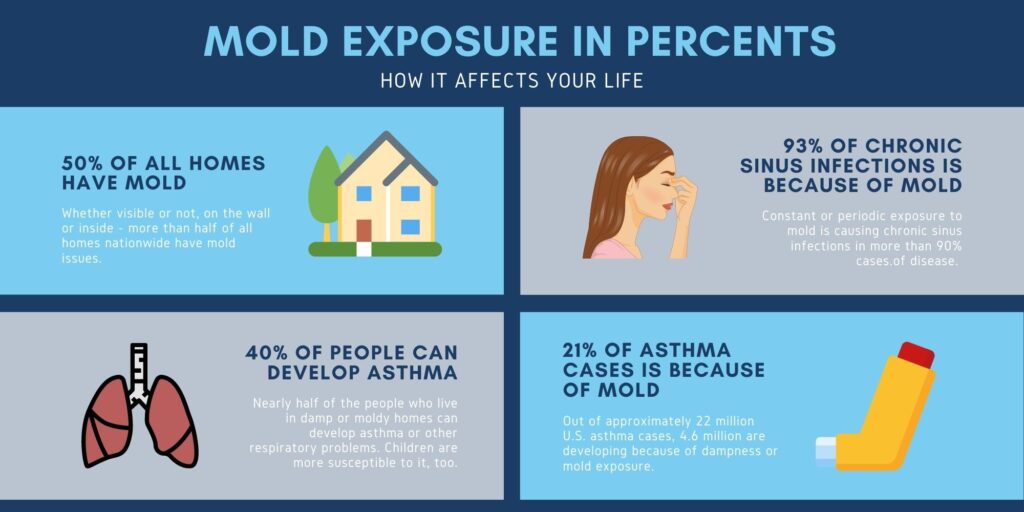Have you ever noticed mold creeping its way onto your walls and wondered if it’s alright to simply paint over it? Mold is not only unsightly but can pose potential health risks if left untreated. In this article, we will explore the question of whether it is acceptable to just paint over mold or if more comprehensive measures are necessary to ensure a safe and mold-free environment. So, before you reach for that paintbrush, let’s find out what you need to know about dealing with mold effectively.
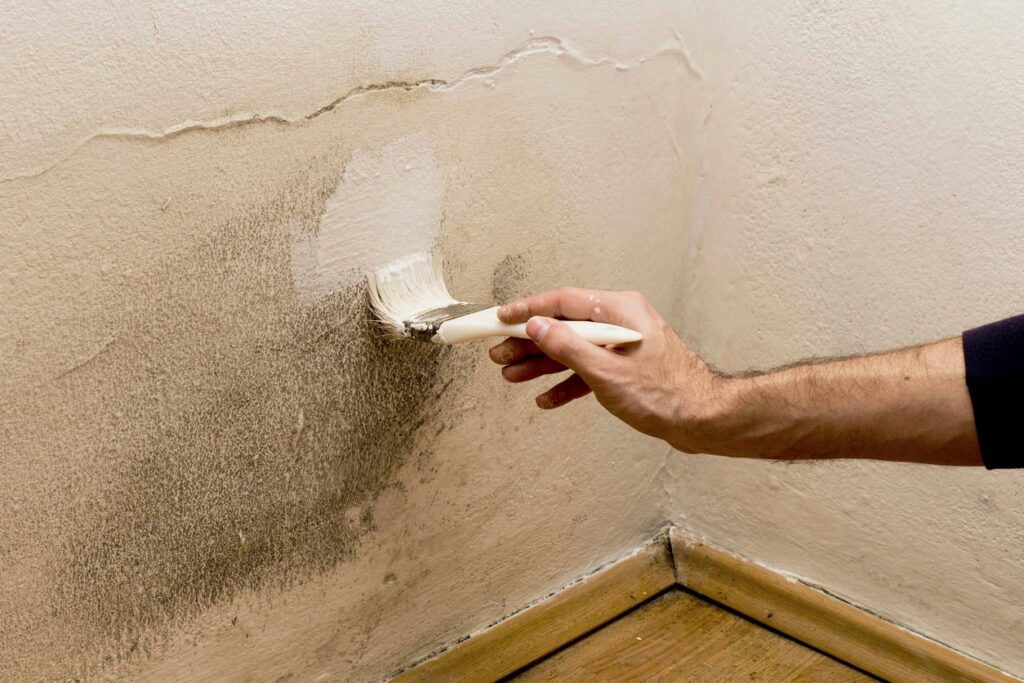

Understanding Mold Growth
Mold is a type of fungus that grows in damp and humid environments. It thrives on moisture and organic materials, such as drywall, wood, and fabric. Mold reproduces by releasing tiny spores into the air, which can be inhaled and cause health problems. Understanding the factors that contribute to mold growth is essential for effective prevention and remediation.
What is mold?
Mold is a type of multicellular organism that belongs to the fungi kingdom. It can come in various colors, including black, green, and white, and has a fuzzy or slimy appearance. Mold plays a vital role in nature by breaking down dead organic matter. However, when it grows indoors and becomes excessive, it can pose numerous health risks and cause structural damage.
What causes mold growth?
The primary factor that leads to mold growth is excess moisture. Whether it’s due to a leaky pipe, condensation, or high humidity levels, mold requires a damp environment to thrive. Poor ventilation and inadequate drying of damp areas can also contribute to mold growth. Additionally, mold growth can be accelerated by a lack of sunlight, warm temperatures, and the presence of organic materials.
Why is mold a problem?
Mold is not just a cosmetic issue; it can have significant implications for your health and the integrity of your home. Besides causing an unpleasant musty odor, mold can trigger allergic reactions, such as sneezing, coughing, and itchy eyes. Prolonged exposure to mold spores can worsen respiratory conditions, such as asthma, and even lead to more severe health problems. Furthermore, mold can weaken structures, including walls and ceilings, if left untreated.
Identifying Mold Infestation
Recognizing the signs of a mold infestation is crucial to addressing the problem promptly and effectively. Being able to identify mold visually, detecting a musty odor, and understanding the potential health risks associated with mold exposure are essential for early intervention.
Visible signs of mold
One of the most obvious signs of mold infestation is the visual presence of mold growth. Mold can appear as dark spots, patches, or discoloration on surfaces, such as walls, ceilings, floors, and even furniture. It may also have a fuzzy or slimy texture. If you notice any unusual spots or staining, particularly in areas prone to moisture, it’s important to investigate further for the presence of mold.
Musty odor
The distinct musty odor is another sign of a potential mold problem. If you detect a persistent damp and earthy smell in certain areas of your home, it could indicate hidden mold growth. The smell may be stronger in areas with poor ventilation or excessive moisture, such as basements, bathrooms, or damp closets. If the source of the odor cannot be explained by other factors, it’s advisable to investigate for mold.
Allergic reactions and health risks
Experiencing allergic reactions, such as sneezing, coughing, congestion, or skin irritation, in specific areas of your home may suggest the presence of mold. Some individuals are particularly sensitive to mold spores and may experience more severe symptoms. Prolonged exposure to mold can also lead to more serious respiratory problems, such as asthma attacks or respiratory infections. If you or your family members exhibit unexplained health issues that seem to worsen when spending time in certain areas, it’s essential to consider mold as a potential cause.


Dangers of Painting Over Mold
While painting over mold may seem like a quick fix or a cost-effective solution, it is not recommended. Painting over mold only hides the problem temporarily and can lead to further complications and potential damage.
Hiding the problem
Painting over mold can give you the illusion that the issue has been resolved, but it’s crucial to understand that the mold is still present underneath the fresh coat of paint. By covering the mold, you are essentially hiding the problem, allowing it to continue growing and spreading unnoticed. This can lead to more extensive damage over time, both to your property and potentially to your health.
Ineffective solution
Paint does not eliminate mold; it merely encapsulates it. Mold can continue to grow and release spores even after being covered with paint. Therefore, painting over mold is not an effective solution for eradicating the problem. It is important to address the root cause of mold growth and remove it appropriately to prevent further damage.
Risk of further damage
Painting over mold without proper remediation can exacerbate the issue and pose risks to your property. Mold can cause structural damage, compromising the integrity of walls, ceilings, and other surfaces. If moisture continues to be present, the mold can grow behind the painted surface, leading to more extensive damage over time. It is crucial to address the underlying cause of mold growth and properly remediate it to prevent further harm to your home.
Treating Mold Before Painting
Before painting, it is vital to address the mold problem to ensure a long-term solution. Here are the steps to follow when treating mold before applying paint:
Identify the source of moisture
To effectively treat mold, it is crucial to identify and eliminate the source of moisture or dampness. This could be due to leaks, condensation, high humidity levels, or poor ventilation. By addressing the underlying moisture issue, you can prevent mold from recurring in the future.
Fixing the moisture issue
Depending on the source of moisture, fixing the problem may involve repairing leaks, improving ventilation, or reducing humidity levels. This could include fixing plumbing issues, installing exhaust fans, using dehumidifiers, or employing moisture barriers in areas prone to dampness. By eliminating the excess moisture, you create an environment that is less conducive to mold growth.
Cleaning and disinfecting the area
Once the moisture issue has been resolved, it is essential to clean and disinfect the affected area thoroughly. This involves removing any visible mold growth using appropriate cleaning agents and tools. It is important to follow proper safety precautions, such as wearing protective gear and ensuring sufficient ventilation during the cleaning process. After removing the mold, it is recommended to disinfect the area to kill any remaining mold spores and prevent their regrowth.


Professional Mold Remediation
In certain situations, it may be necessary to seek professional help for mold remediation. Professional mold remediation experts have the knowledge, experience, and tools required to effectively address mold problems. Understanding when professional help is necessary and the benefits of hiring experts can help ensure a safer and more thorough remediation process.
When is professional help necessary?
Professional help is typically necessary for larger or extensive mold infestations. If the affected area is larger than 10 square feet, if the mold growth is widespread, or if the mold is present in difficult-to-reach areas, it is recommended to hire professionals. Additionally, if the mold is suspected to be toxic (such as with black mold), or if the mold is causing severe health issues, professional mold remediation is highly advised.
Benefits of hiring experts
Professional mold remediation offers several advantages. Experts have the knowledge and experience to properly assess the extent of the mold problem, identify the sources of moisture, and effectively remove the mold. They have access to specialized equipment and techniques, ensuring a more thorough and efficient remediation process. Additionally, professionals can provide guidance on preventing future mold growth and offer advice on ventilation and moisture control.
Safety precautions
Safety is a significant concern when dealing with mold. Mold spores can be hazardous when inhaled, especially in large quantities or with certain types of mold. Professional mold remediation teams are trained in proper safety protocols and use personal protective equipment (PPE) to minimize exposure. Hiring professionals ensures that the remediation process is conducted safely and effectively, protecting both your health and your property.
DIY Mold Removal
In some cases, minor mold issues can be addressed through DIY mold removal methods. However, it is essential to approach DIY mold removal with caution and understand the potential risks involved. Here are some considerations and steps to follow for safe and effective DIY mold removal.
Is it safe to remove mold yourself?
DIY mold removal can be safe if approached correctly, but it is important to consider the size and severity of the mold infestation. Small areas of mold, less than 10 square feet, can potentially be handled by homeowners. However, it is crucial to assess the situation and your own capabilities honestly. If the mold is extensive, toxic, or difficult to access, it is advisable to seek professional assistance to ensure proper remediation.
Steps for DIY mold removal
If you choose to proceed with DIY mold removal, follow these steps for a safer and more effective process:
-
Protect yourself: Before starting, ensure you have appropriate protective gear, including gloves, goggles, and a mask to prevent inhalation of mold spores.
-
Contain the area: Use plastic sheets and tape to seal off the affected area from the rest of the house. This helps prevent the spread of mold spores to other areas.
-
Remove affected materials: If mold has contaminated porous materials, such as drywall or carpeting, it may be necessary to remove and dispose of these materials properly.
-
Clean the area: Use a solution of water and detergent to scrub the mold off non-porous surfaces. A bleach solution can be used for more stubborn mold stains, but it is important to follow proper dilution and safety guidelines.
-
Dry thoroughly: After cleaning, ensure the area is thoroughly dried to discourage further mold growth. Use fans, dehumidifiers, or natural ventilation to aid in the drying process.
-
Monitor and prevent recurrence: Regularly inspect the treated area for any signs of mold regrowth. Address any moisture issues promptly and maintain proper ventilation and humidity control in your home.
Preventing mold recurrence
To prevent mold from recurring and spreading in your home, implement the following preventive measures:
-
Maintain proper ventilation: Ensure that your home has adequate airflow, particularly in areas prone to moisture, such as bathrooms, kitchens, and basements. Use exhaust fans or open windows to allow fresh air to circulate.
-
Control indoor humidity: Keep indoor humidity levels between 30% and 50% to discourage mold growth. Use dehumidifiers or air conditioners, especially during humid weather or in rooms with inadequate ventilation.
-
Regular inspections and maintenance: Regularly inspect your home for any signs of moisture or water leaks. Address plumbing issues promptly, repair any roof or window leaks, and ensure proper insulation and sealing to prevent moisture intrusion.
By taking these preventive measures and promptly addressing any signs of moisture or mold, you can significantly reduce the risk of mold growth and its associated problems.


Preventing Mold Growth
Prevention is key when it comes to mold growth. By implementing the following practices, you can create an environment that is less conducive to mold and minimize the risk of mold infestations.
Maintaining proper ventilation
Proper ventilation is crucial in preventing mold growth. Ensure that your home has sufficient airflow by using exhaust fans in bathrooms, kitchens, and laundry rooms. Open windows and doors regularly to let fresh air circulate. In areas with poor ventilation, consider installing additional vents or utilizing air purifiers to improve air quality and reduce the moisture that promotes mold growth.
Controlling indoor humidity
Managing indoor humidity levels is essential for mold prevention. Ideally, indoor humidity should be kept between 30% and 50%. Use dehumidifiers in areas with high humidity or during humid weather conditions. Air conditioners can also help reduce humidity levels. Be mindful of activities that generate moisture, such as cooking or showering, and take steps to control the excess moisture they produce.
Regular inspections and maintenance
Regular inspections of your home can help identify potential moisture sources and address them before mold becomes a problem. Look for any signs of water leaks, such as water stains on ceilings or walls, damp or musty odors, or condensation on windows. Promptly address any plumbing issues, roof leaks, or inadequate insulation. Regular maintenance, such as cleaning gutters and ensuring proper drainage around your home, can also help prevent water accumulation and reduce the risk of mold growth.
By being proactive and implementing preventive measures in your home, you can significantly reduce the likelihood of mold growth and the associated problems it brings.
Health Risks Associated with Mold
Exposure to mold can pose various health risks, particularly for individuals with existing respiratory conditions, compromised immune systems, or allergies. Understanding the potential health effects of mold is crucial for early detection, prevention, and appropriate remediation.
Respiratory problems
Exposure to mold spores can trigger or worsen respiratory problems, such as asthma, allergies, and other respiratory conditions. Inhaling mold spores can irritate the airways and cause symptoms such as coughing, wheezing, chest tightness, and shortness of breath. Individuals with a history of asthma or other respiratory conditions need to be especially cautious and take immediate action if mold is present in their environment.
Allergic reactions
Mold can also cause allergic reactions in susceptible individuals. Common allergic symptoms include sneezing, runny or stuffy nose, itchy or watery eyes, and skin rashes. These symptoms can be particularly problematic for individuals with mold allergies or those who are sensitive to mold spores. If you experience allergic reactions that seem to be associated with certain areas of your home or worsen when spending time in specific environments, it is important to investigate for the presence of mold.
Toxic mold syndrome
Certain types of mold, such as Stachybotrys chartarum (also known as black mold), produce mycotoxins that can be harmful to human health. These toxins can cause a range of symptoms and health effects, collectively referred to as toxic mold syndrome. Symptoms of toxic mold syndrome may include fatigue, headaches, respiratory issues, neurological problems, and skin irritation. If you suspect the presence of toxic mold, it is essential to seek professional help for proper assessment and safe remediation.


Legal and Insurance Considerations
In addition to the health risks and property damage associated with mold, there are also legal and insurance considerations that homeowners should be aware of. Understanding these factors can help ensure proper handling of mold-related issues and protect your interests.
Liability for neglecting mold issues
Homeowners have a responsibility to address and remediate mold problems promptly. Neglecting mold issues can potentially lead to legal liabilities if the mold adversely affects the health of occupants or causes damage to the property. If a tenant or visitor becomes ill or suffers property damage due to mold that could have been prevented through appropriate remediation, the homeowner may be held liable for negligence.
Insurance coverage for mold damage
Insurance policies may have varying levels of coverage for mold-related damage. Standard homeowner’s insurance policies typically exclude coverage for mold damage resulting from long-term neglect or poor maintenance. However, some policies may offer limited coverage for sudden and accidental mold damage, such as damage caused by a burst pipe. It is important to review your insurance policy and understand the coverage details regarding mold-related issues.
Importance of proper documentation
In the event of a mold problem, it is crucial to document the situation thoroughly. Keep records of any visible mold growth, photographs, inspection reports, invoices for remediation services, and any communication with insurance providers or contractors. Proper documentation can help support your case in potential legal disputes or insurance claims.
To protect yourself legally and financially, it is advisable to consult legal professionals and insurance experts for guidance specific to your situation. Understanding your rights and responsibilities can help you navigate potential mold-related issues effectively.
Conclusion
Understanding mold growth, identifying mold infestations, and addressing mold problems appropriately are essential for maintaining a safe and healthy living environment. Painting over mold is not a recommended solution, as it only hides the problem temporarily and can lead to further complications. Treating mold before painting involves identifying the source of moisture, fixing the underlying problem, and thoroughly cleaning and disinfecting the affected areas.
In some cases, professional mold remediation may be necessary to effectively address extensive mold infestations or toxic mold. Hiring experts offers numerous benefits, including their knowledge, experience, and access to specialized equipment. They can ensure a safer and more thorough remediation process, protecting your health and property.
For smaller mold issues, DIY mold removal can be considered. However, it is important to approach it cautiously and follow proper safety procedures. Regular inspections, maintaining proper ventilation, and controlling indoor humidity are key preventive measures to minimize the risk of mold growth.
Exposure to mold can lead to respiratory problems, allergic reactions, and, in some cases, toxic mold syndrome. It is crucial to be aware of the potential health risks associated with mold and take appropriate action if mold is present in your environment.
Additionally, understanding legal and insurance considerations related to mold issues is important. Proper documentation and seeking expert advice can help protect your interests and navigate any potential legal and insurance challenges.
By having a comprehensive understanding of mold growth, its causes, and appropriate remediation methods, you can effectively address mold problems and create a healthy and mold-free living environment.

